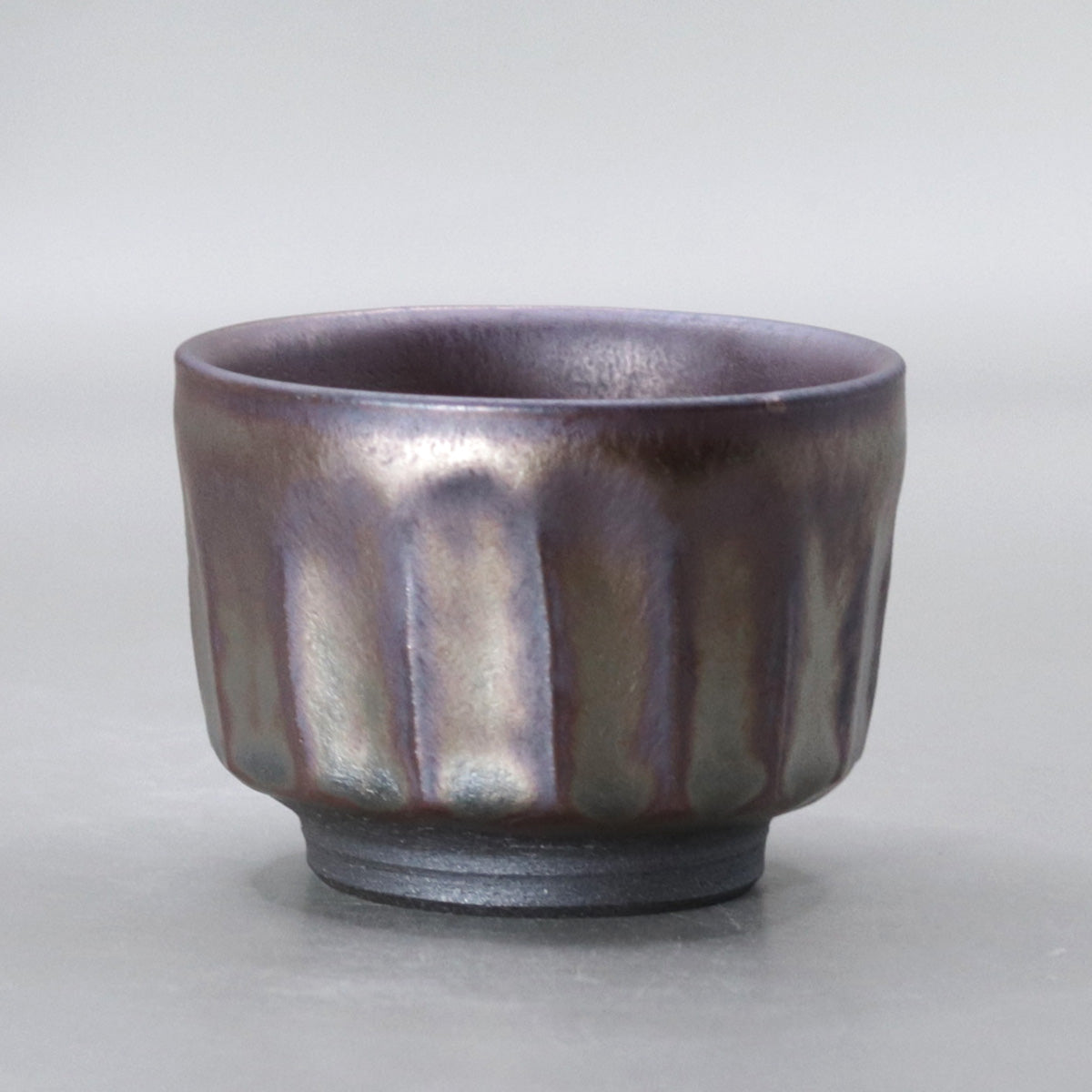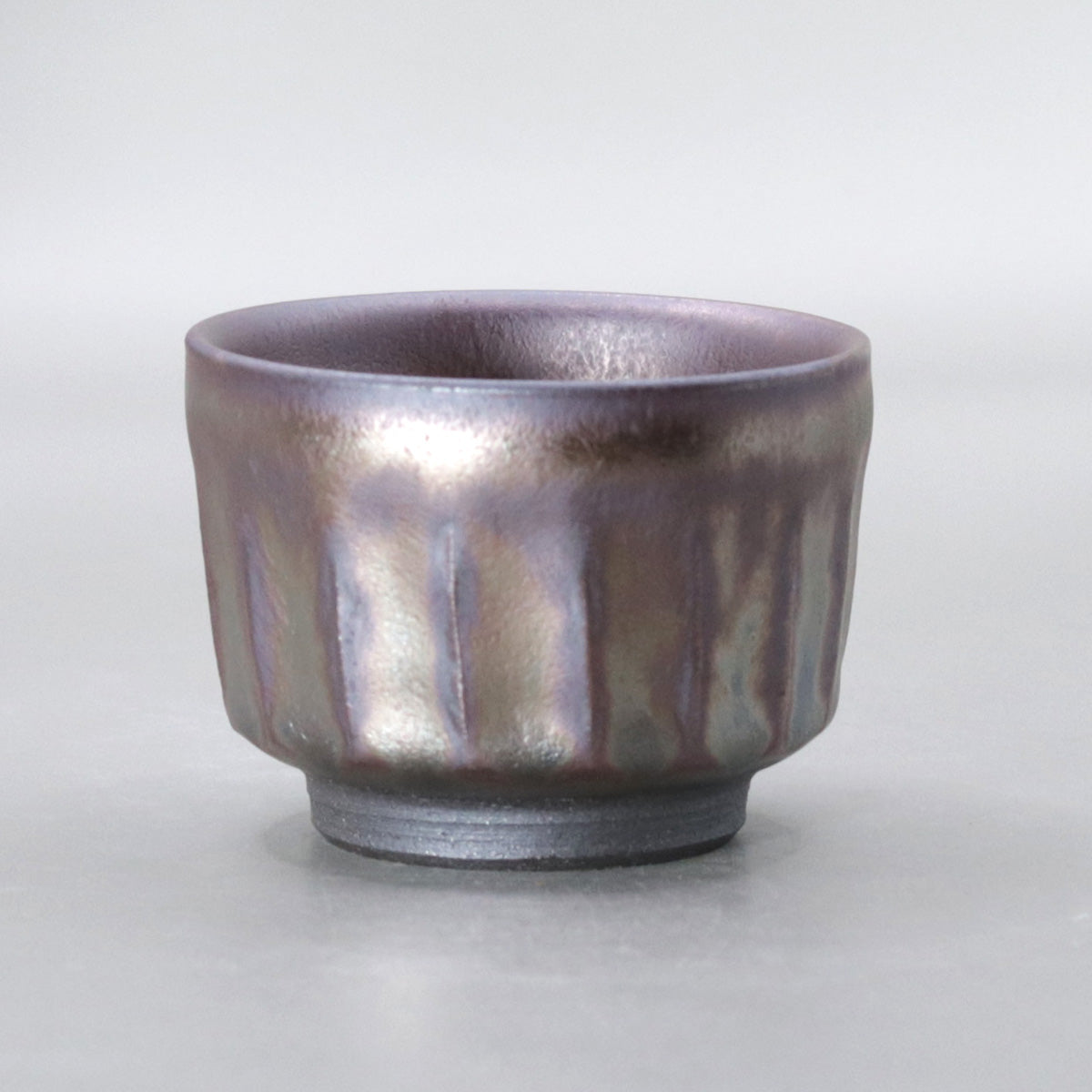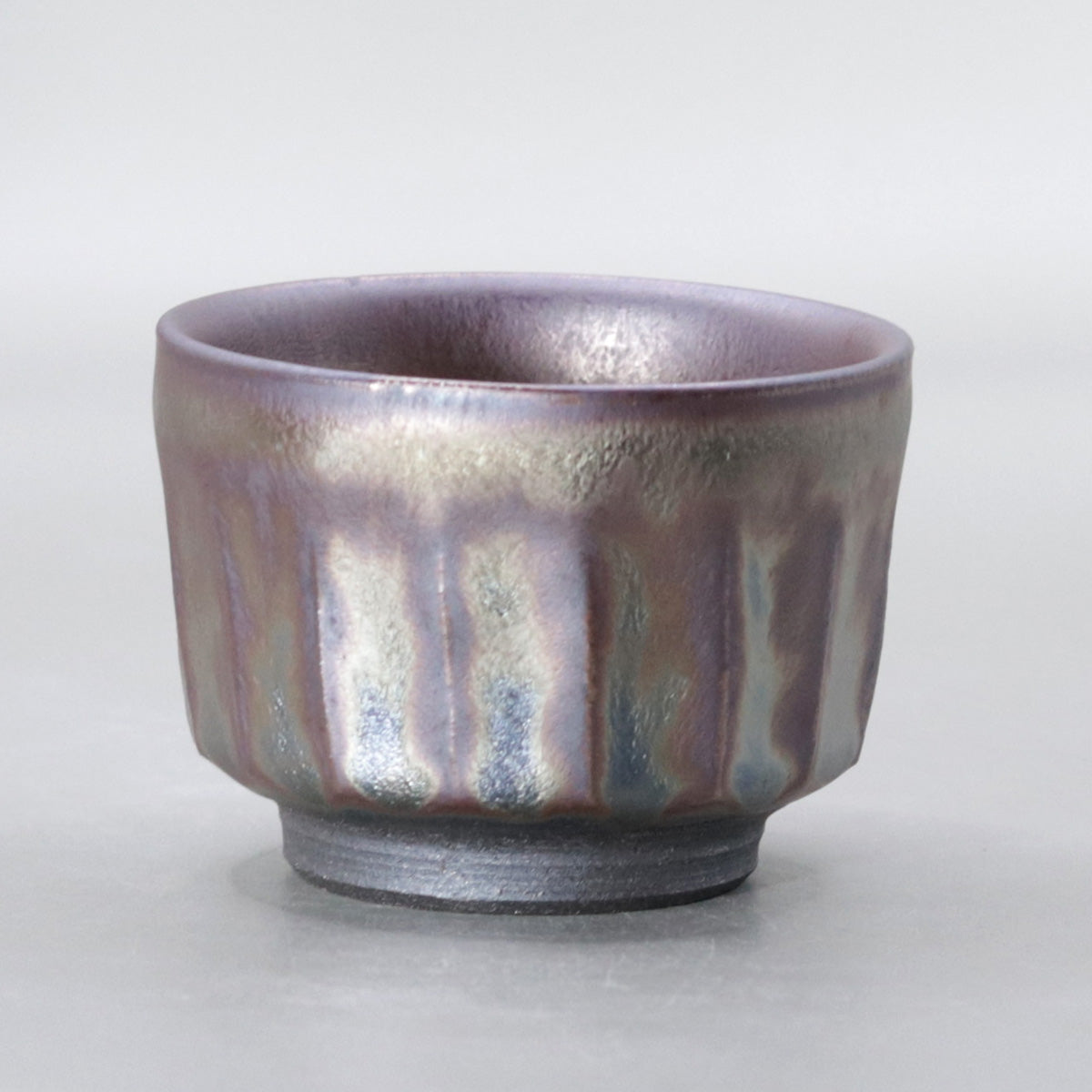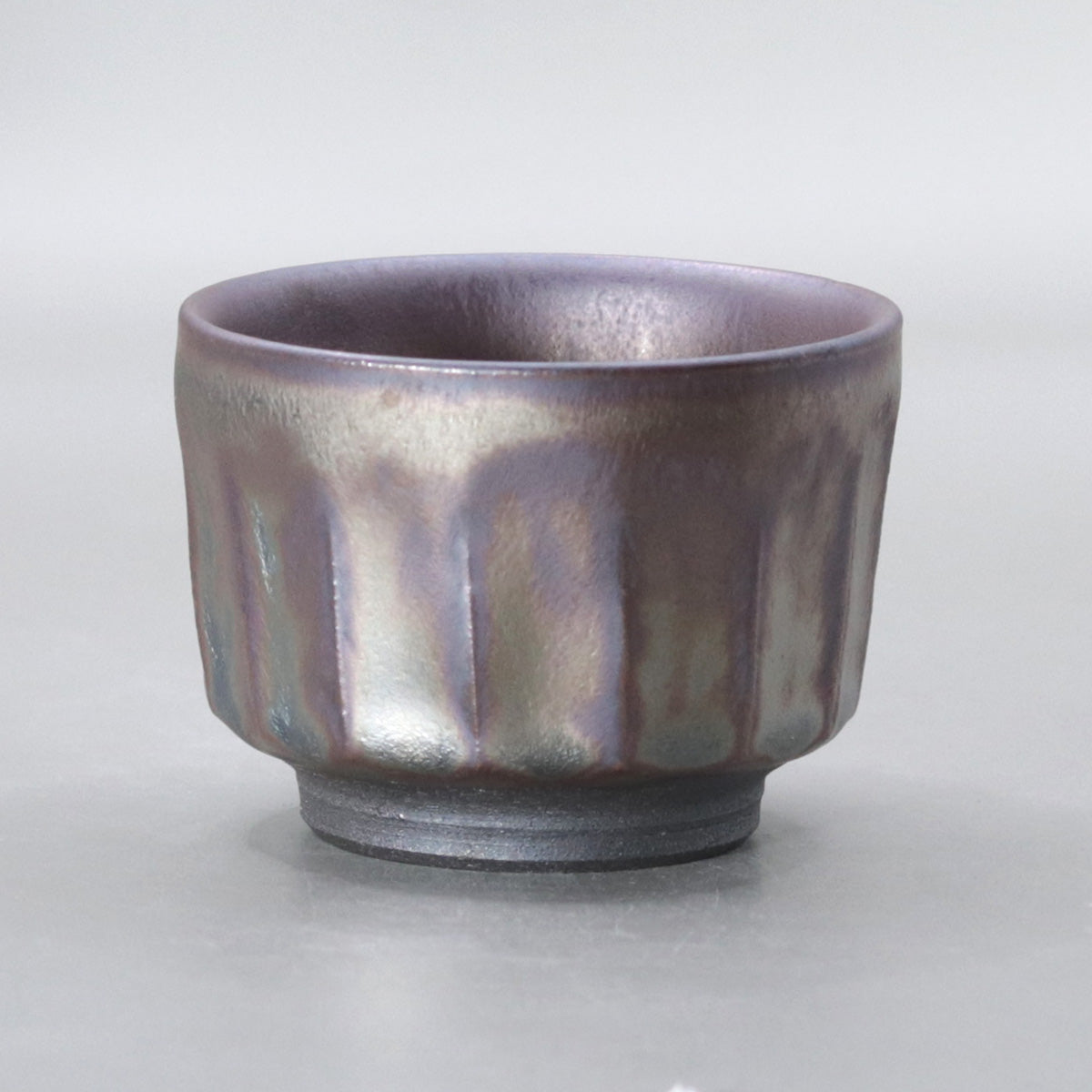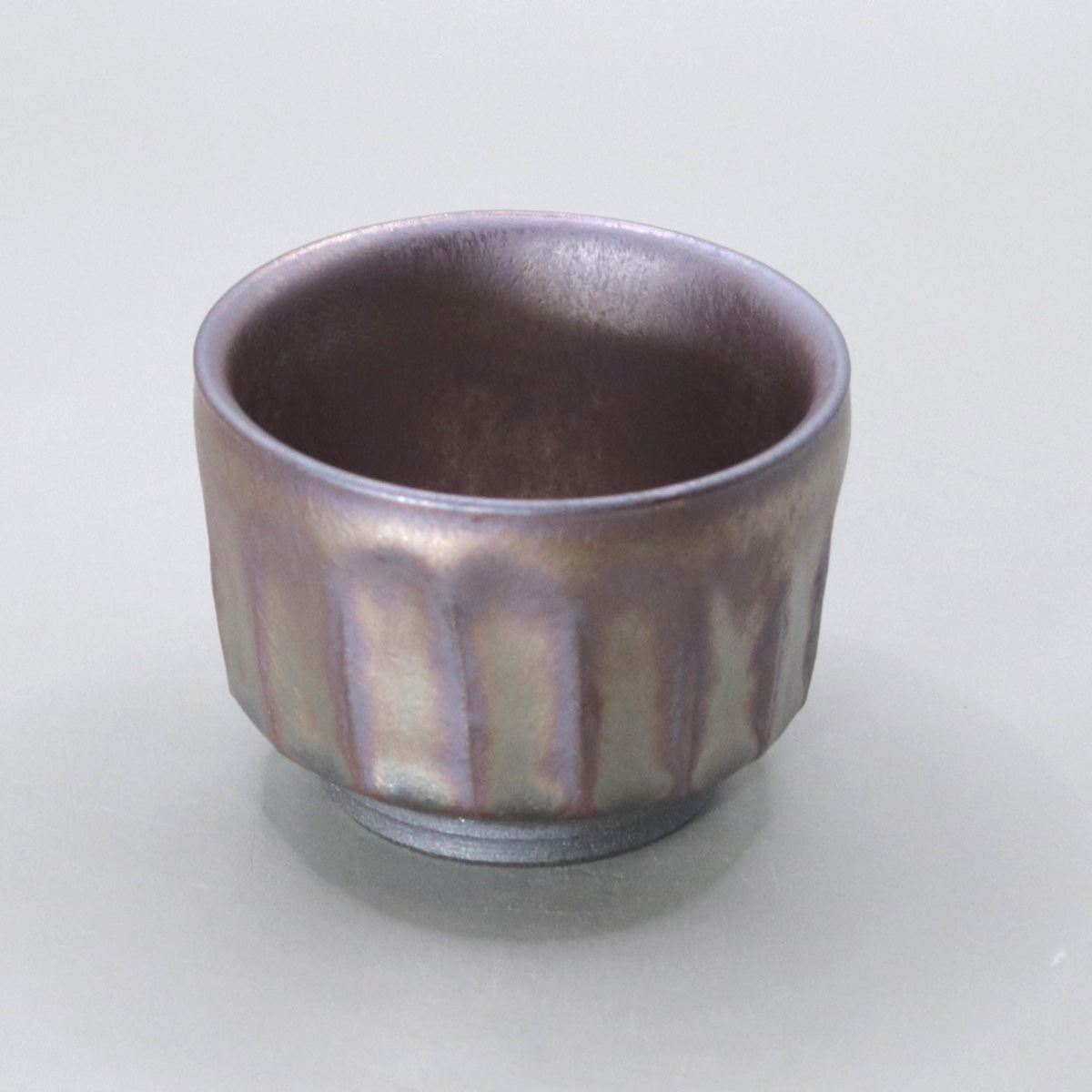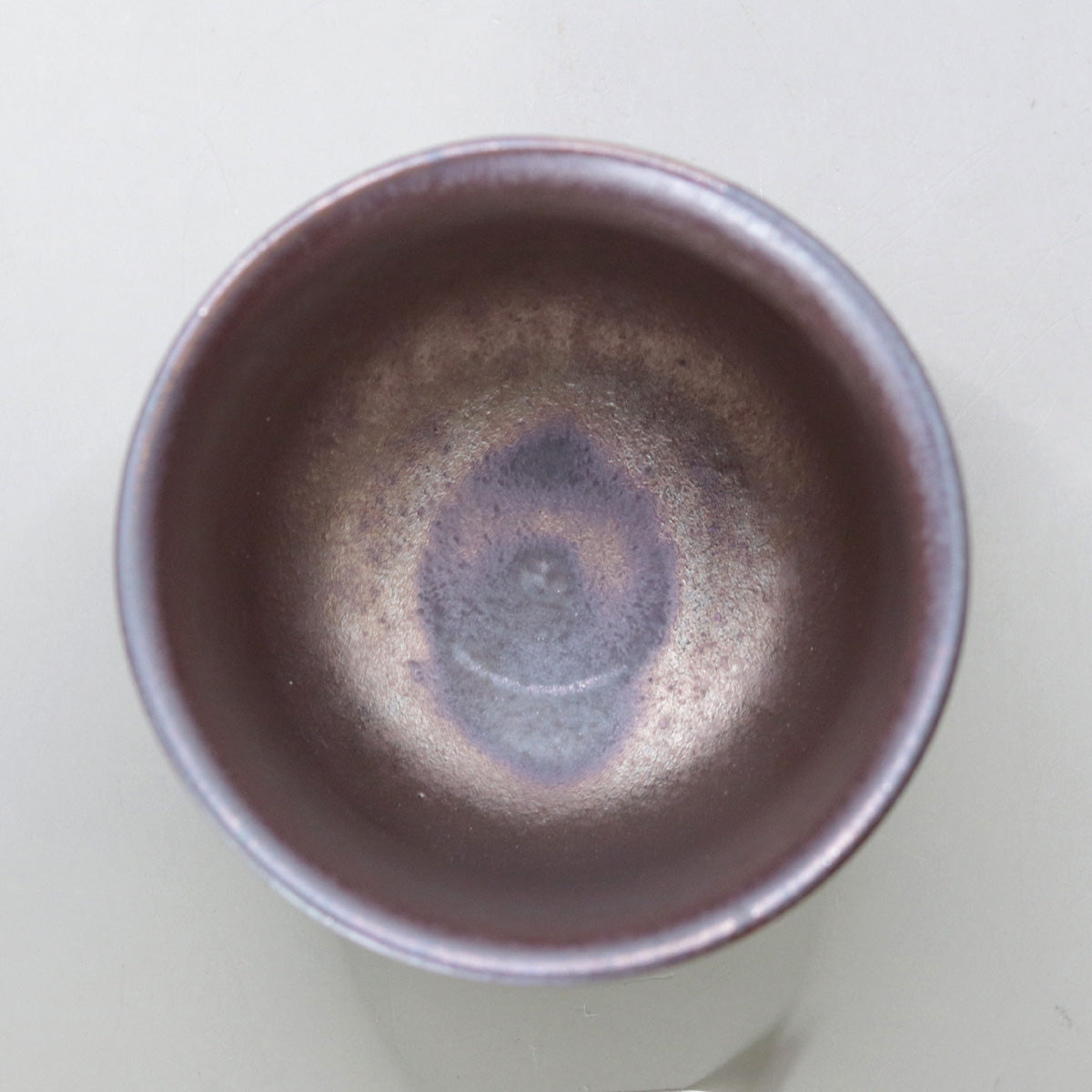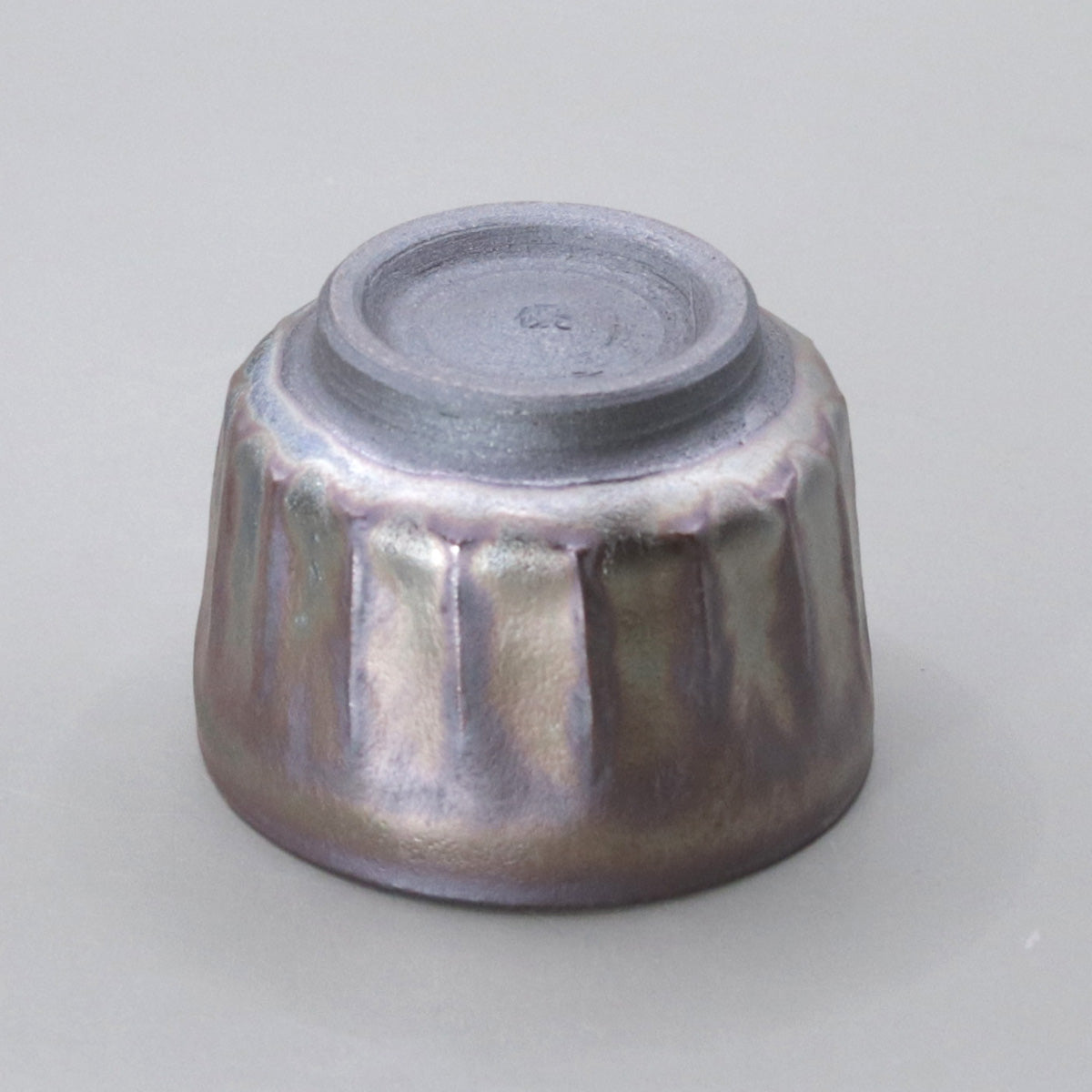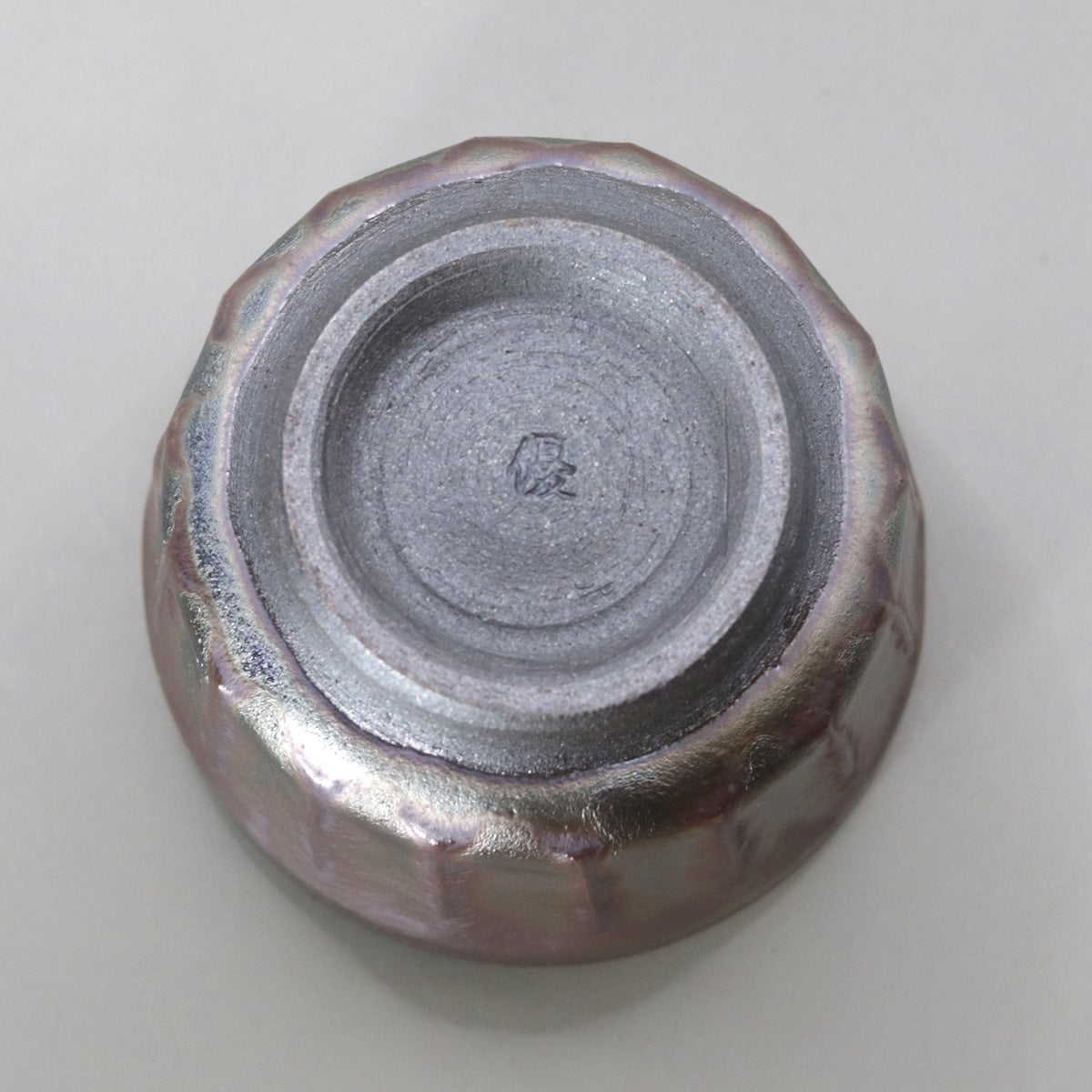Tenmoku glaze sake cup by Okada Yu
Tenmoku glaze sake cup by Okada Yu
Couldn't load pickup availability
Width: 7.4cm Height: 5.4cm
Tenmoku glaze sake cup
-- Created by Masaru Okada --
Work summary
This is a Tenmoku-glazed sake cup made by Okada Masaru, who has a kiln in Uji-tanzan, Kyoto. The slightly upright cylindrical body has multiple vertical ridges (shinogi) carved into it, centered around the bottom. A Tenmoku glaze is applied to it, with layers of purple gray, blue ink, and dull gold appearing, and depending on how the light hits it, a metallic sheen and matte finish intertwine to create a sense of depth.
Glaze and technique
Manganese oxide and trace amounts of chromium are added to the iron feldspar-based Tenmoku glaze , giving it a deep purple-black base with a bluish-steel and dull gold luster.
Fluctuation firing : Okada's unique method involves producing a black color through the first reduction, and then finely alternating between reduction and weak oxidation in the latter stages of the firing, resulting in the formation of a crystalline layer with a metallic luster on the surface.
Effect of the ridged surface : The glaze thins out on the convex parts of the ridges and changes color from purple-gray to reddish purple, while the glaze pools in the concave parts and changes color from blue-black to dull gold, creating a different appearance depending on the angle from which you view it.
Historical and cultural background
Tenmoku glaze originated from the black-glazed bowls of Jian kilns in Fujian Province during the Song dynasty, and was brought to Japan by Zen monks during the Kamakura period. It eventually came to be used in the tea ceremony, and the accidental crystal patterns such as oil drops and Yohen are particularly prized as "the wonder of kiln transformation." Meanwhile, the ridged technique was developed in Joseon Kohiki and Hagi ware, and took root as a Japanese design in which simple chamfering accentuates the contrast between the base and the glaze. This work fuses these two traditional elements and elevates them to a modern form and brilliance.
Aesthetic intent and spirituality
The rhythm of the vertical ridges is a "sign of time" that visualizes the breath of each moment. The deep glow of the Tenmoku glaze that is layered on top of it evokes the infinite universe that is linked to the Zen phrase "Yoro Mujin." Every time you hold the sake in your palm and tilt it, the light sways along the ridges and the surface of the liquid is slightly diffused - this slight change speaks of the preciousness of "a once-in-a-lifetime encounter."
How to use and points to note
Ideal for chilled or room temperature sake : The cylindrical shape retains the aroma of the sake to an appropriate degree, delicately bringing out the aroma of ginjo sake.
The appearance changes depending on the light source : In natural light, it has a calm dull gold color, while under spotlights, the purple-gray color has a metallic glow. Enjoy the various expressions by changing the time of day and lighting.
A pleasure to hold : The raised part of the ridge provides a grip for your fingers, making it non-slip and easy to hold.
A dull golden light flickers in the deep purple-black darkness, and the rhythm of the ridges quietly ticks away the time. This sake cup is a crystallization of the kiln change control techniques that Okada Masaru has cultivated over the years, and the beauty of minimal form. We hope you will enjoy a blissful drinking session while savoring the universe hidden in the silence in the palm of your hand.
Share








Multi-Column
-
[I will send it to you quickly and carefully]
We carefully package each product in a way that suits it best.
Also, delivery times vary depending on the piece (vessel, etc.).
Items that already come with a box will be shipped within 1-3 days of the order date.
For items that require a box to be made after your order, it will take approximately 30 days for production to be completed and then shipped.
In either case, once we have confirmed your order, we will contact you by email to inform you of the delivery date.
-
[Requests when purchasing pottery]
Even products that look the same may differ slightly in color, shape, size, etc.
The way the glaze is used, the power of the kiln, the firing method, the season, and the humidity also affect the appearance of the pottery.
Please understand the individuality of each piece of pottery and enjoy the unique warmth of handmade.

